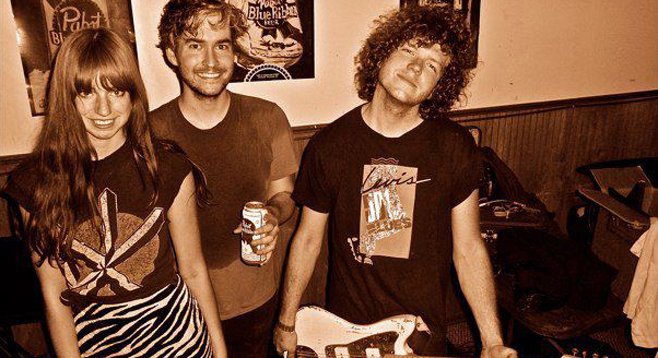 Facebook
Facebook
 X
X
 Instagram
Instagram
 TikTok
TikTok
 Youtube
Youtube

Shoegaze, done loud. Ringo Deathstarr falls into the sub-grouping of rock bands that have learned a valuable lesson from forbears such as My Bloody Valentine: play your music loud enough and people will think you are important. Ringo Deathstarr, otherwise, is an act that gets mixed reviews. I think the lines of like/not like are age-related. Younger pop critics swoon, older pop critics have heard this all before, and then some. So, what’s to like about RS? They are the sound of 1990s London distortion, an era Ringo Deathstarr was late for but manages to duplicate well. I like them for that alone. They are the sound of the shoegazers of old, but with the occasional surprise.
They do it with melody. There are songs when the band is a guitar-snarl of effects. Then, there are ones that sound complex and dreamy, as if Peter, Paul, and Mary had been closeted shoegazers themselves and maybe old Stan Getz would possibly drop in any minute and blow a tenor-sax solo. The Ringo Deathstarr songbook, for the most part, builds tension, but never lets it release.
So, what’s up with the term shoegaze? For the uninitiated, the sub-genre came out of Britain sometime during the late 1980s and reached its peak of popularity in the early ’90s. A simple, introspective, guitar-band sound, minus the virtuoso soloing. But the guitars are always distorted to the outer limits of what a guitar actually sounds like through the use of effects pedals, which in turn are triggered by a guitarist’s feet. Therefore, to make this music, guitarists spend a lot of time looking down at their foot pedals, a habit which led to the somewhat derogatory title. Shoegaze is rock-and-roll antiquity that is tough to reinvent. That bands are working to breathe life into this ambient chapter of pop culture is worth the price of admission.
The Tennis System and the Short Eyes also perform.
Ringo Deathstarr: Soda Bar, Monday, September 17, 8:30 p.m. 619-255-7224, $7.


Shoegaze, done loud. Ringo Deathstarr falls into the sub-grouping of rock bands that have learned a valuable lesson from forbears such as My Bloody Valentine: play your music loud enough and people will think you are important. Ringo Deathstarr, otherwise, is an act that gets mixed reviews. I think the lines of like/not like are age-related. Younger pop critics swoon, older pop critics have heard this all before, and then some. So, what’s to like about RS? They are the sound of 1990s London distortion, an era Ringo Deathstarr was late for but manages to duplicate well. I like them for that alone. They are the sound of the shoegazers of old, but with the occasional surprise.
They do it with melody. There are songs when the band is a guitar-snarl of effects. Then, there are ones that sound complex and dreamy, as if Peter, Paul, and Mary had been closeted shoegazers themselves and maybe old Stan Getz would possibly drop in any minute and blow a tenor-sax solo. The Ringo Deathstarr songbook, for the most part, builds tension, but never lets it release.
So, what’s up with the term shoegaze? For the uninitiated, the sub-genre came out of Britain sometime during the late 1980s and reached its peak of popularity in the early ’90s. A simple, introspective, guitar-band sound, minus the virtuoso soloing. But the guitars are always distorted to the outer limits of what a guitar actually sounds like through the use of effects pedals, which in turn are triggered by a guitarist’s feet. Therefore, to make this music, guitarists spend a lot of time looking down at their foot pedals, a habit which led to the somewhat derogatory title. Shoegaze is rock-and-roll antiquity that is tough to reinvent. That bands are working to breathe life into this ambient chapter of pop culture is worth the price of admission.
The Tennis System and the Short Eyes also perform.
Ringo Deathstarr: Soda Bar, Monday, September 17, 8:30 p.m. 619-255-7224, $7.
Comments